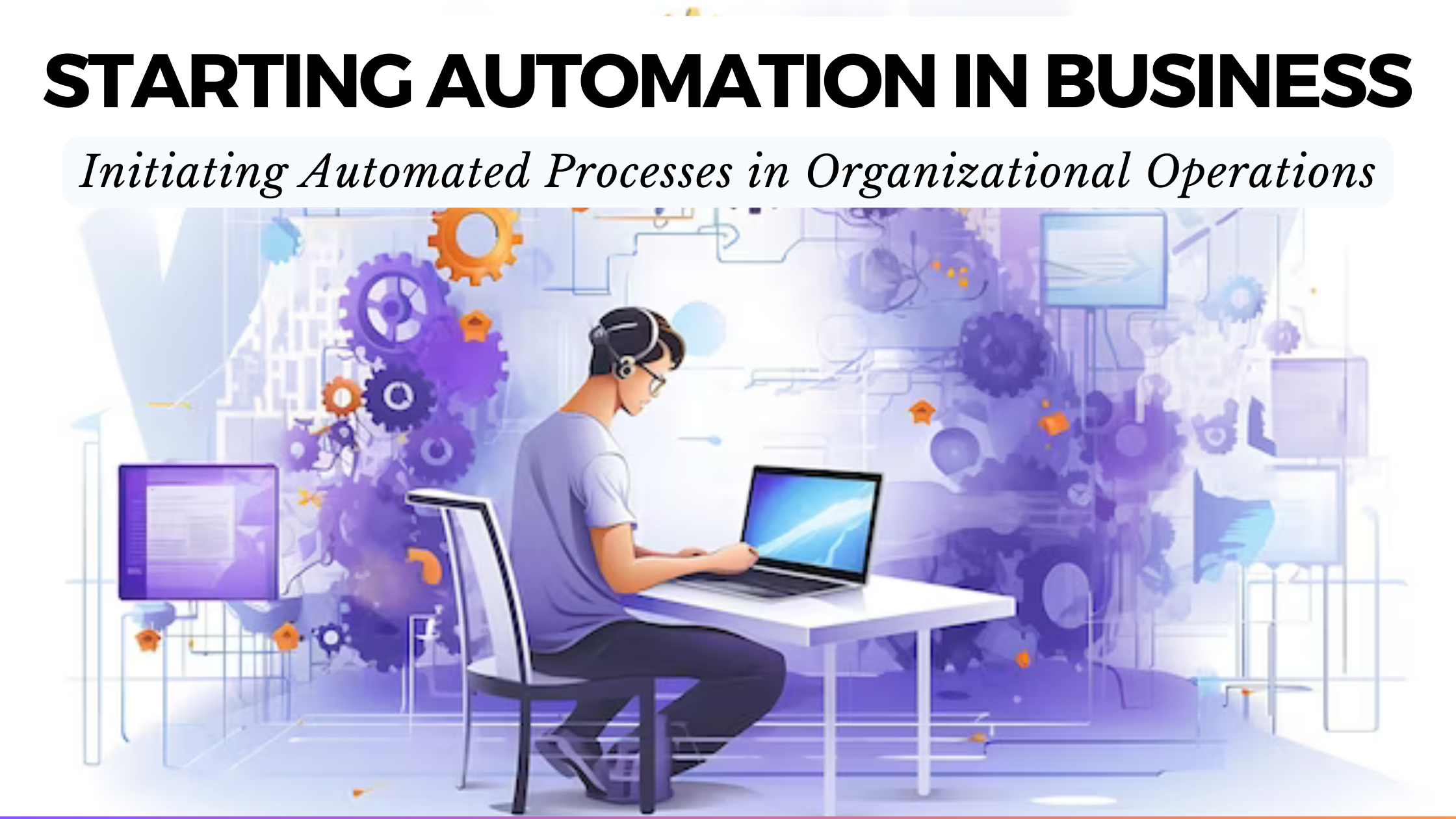Starting Automation in Business: Initiating Automated Processes in Organizational Operations
-


Starting Automation in Business: Initiating Automated Processes in Organizational Operations
In the dynamic landscape of modern business, automation has become a key driver of efficiency and productivity. Initiating automated processes in organizational operations can revolutionize the way businesses operate, enhancing speed, accuracy, and overall performance. In this comprehensive guide, we’ll explore the process of starting automation in business, highlighting relevant SaaS products and introducing the benefits of Subscribed.FYI for effective SaaS stack management.
As technology continues to advance, businesses are increasingly turning to automation to streamline processes, enhance efficiency, and stay competitive. Initiating automated processes in organizational operations is a strategic move that can lead to significant time and cost savings. In this article, we’ll explore the steps and considerations for businesses looking to start their automation journey.
- Conduct a Process Audit:
- Begin by conducting a thorough audit of existing processes. Identify repetitive, rule-based tasks that are time-consuming and prone to human error. These are prime candidates for automation.
- Define Clear Objectives:
- Clearly define the objectives of automation. Whether it’s reducing manual workload, improving accuracy, or enhancing speed, having specific goals will guide the selection of automation tools and processes.
- Engage Stakeholders:
- Involve key stakeholders, including employees who are directly involved in the processes slated for automation. Their insights can provide a deeper understanding of pain points and help in designing effective automated solutions.
- Select the Right Processes:
- Prioritize processes that offer the highest return on investment (ROI) when automated. Look for tasks that are time-sensitive, repetitive, and prone to human error, as these often yield the most significant benefits.
- Investigate Automation Tools:
- Research and evaluate automation tools and platforms that align with your business needs. From robotic process automation (RPA) to workflow automation and task-specific tools, there are various solutions available. Consider factors such as scalability, ease of integration, and user-friendliness.
- Pilot Programs:
- Before implementing automation across the entire organization, conduct pilot programs on a smaller scale. This allows you to test the selected tools, gather feedback, and identify any adjustments needed before full-scale deployment.
- Employee Training:
- Provide comprehensive training to employees who will be working with the automated processes. Address any concerns they may have and emphasize the ways in which automation can complement and enhance their roles.
- Ensure Data Security:
- Implement robust security measures to protect sensitive data and ensure compliance with data protection regulations. Encryption, access controls, and regular security audits are essential components of a secure automated environment.
- Integration with Existing Systems:
- Ensure that the chosen automation tools seamlessly integrate with your existing systems. This integration is crucial for maintaining data consistency and workflow continuity.
- Continuous Monitoring and Optimization:
- Once automation is in place, establish a system for continuous monitoring and optimization. Regularly assess the performance of automated processes, identify any bottlenecks or issues, and make adjustments as necessary.
- Cultivate a Culture of Continuous Improvement:
- Foster a culture that values innovation and continuous improvement. Encourage employees to provide feedback and suggestions for further optimizing automated processes.
Understanding the Basics of Business Automation
Before diving into the tools and strategies, it’s essential to grasp the fundamentals of business automation. Automation involves using technology to perform tasks without continuous human intervention. From routine processes to complex workflows, automation can streamline operations across various departments.
Relevant SaaS Products to Kickstart Automation
1. Zapier
Zapier is a versatile automation tool that connects apps and automates workflows. It allows you to create “Zaps,” automated workflows triggered by specific events, to seamlessly integrate various applications used in your business operations.
2. Integromat
Integromat is an advanced automation platform that enables users to connect apps and automate processes using a visual builder. It supports the creation of complex scenarios with multiple triggers, actions, and integrations.
3. UiPath
UiPath is a leading robotic process automation (RPA) tool that automates repetitive tasks by mimicking human interactions with software applications. It’s particularly useful for automating rule-based processes.
4. Monday.com
Monday.com is a work operating system that not only facilitates collaboration but also allows users to create custom workflows and automate routine tasks. It’s an excellent tool for project management and process optimization.
5. Process Street
Process Street is a powerful process management platform that enables the creation and automation of recurring workflows. It’s designed to enhance the efficiency of standard operating procedures (SOPs) in businesses.
Conclusion
Starting automation in business is a transformative journey that requires thoughtful planning and the right set of tools. From connecting your favorite apps to automating complex business processes, the SaaS products mentioned above can play a crucial role in your automation strategy.
As you embark on your automation journey, Subscribed.FYI is here to simplify the management of your SaaS stack. Sign up for free and explore exclusive Subscribed.FYI Deals to unlock savings on a wide range of SaaS tools.
Effortlessly manage all your subscriptions in one place with our ultimate subscription management solution. Take control of your expenses and make informed decisions about SaaS tools that suit your business needs.





